Marine Conservation Through a Scientist’s Eyes
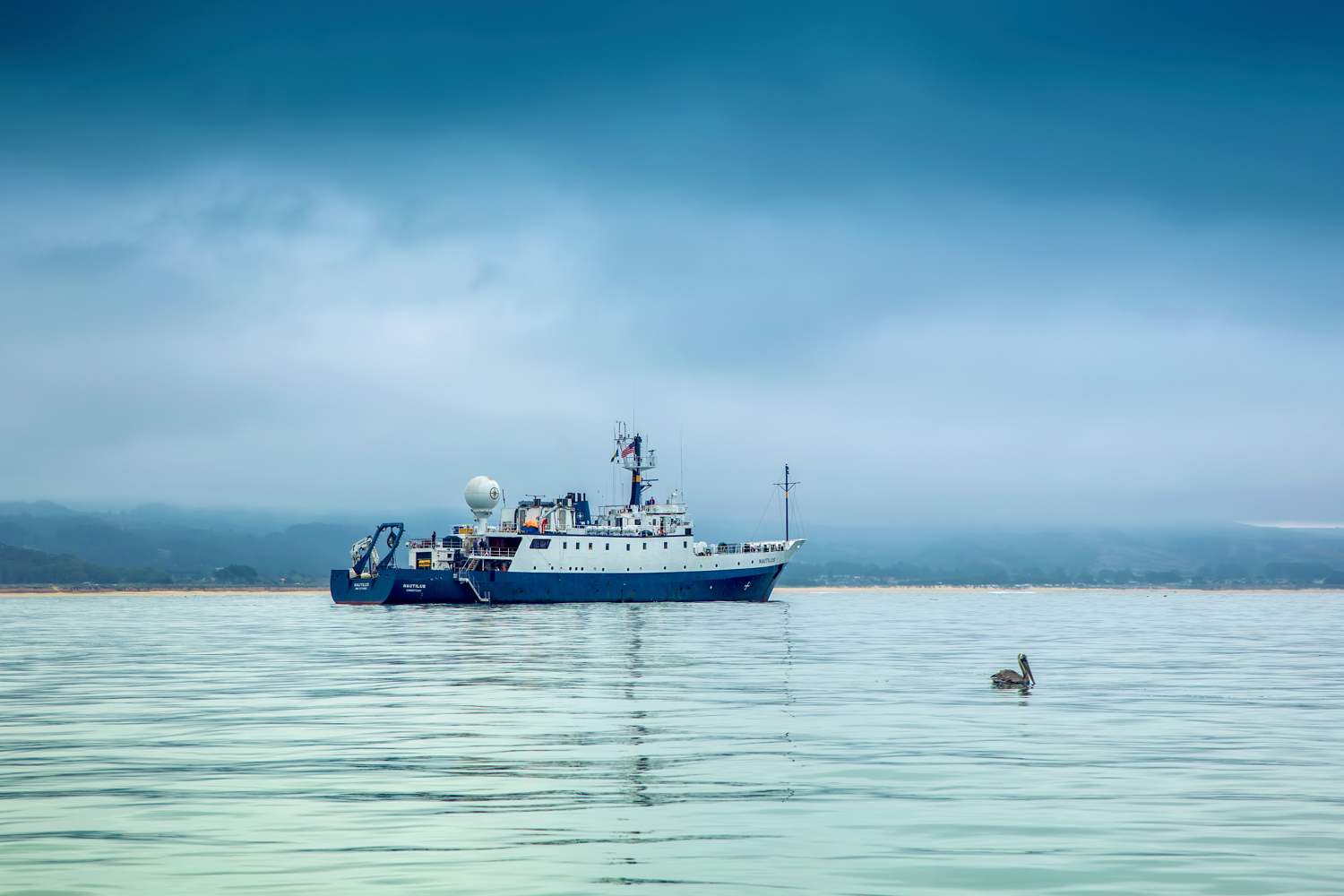
Notes From Aboard the Nautilus:
Marine Conservation Through a Scientist’s Eyes
Marine scientist and educator, Mugdha Flores, takes us aboard the Exploration Vessel Nautilus and into the blue depths—offering advice on how we can strive for sustainability, and why it matters.
By Mugdha Flores
I grew up in southern India, near lush, tropical rainforests and warm, sandy coastlines. Growing up near the ocean brought me tremendous joy. I’d see the ocean and run toward it, squealing with glee. As an adult, my reaction to the ocean remains the same.
I have always felt a natural urge to explore the ocean; to learn more about it, and to protect it. It has led me to pursue an unconventional career in marine science and education. As a scientist, I have always been curious about the ocean and this curiosity has led to some incredible adventures in the field: from diving and immersing myself in coral reefs of the Atlantic and Pacific oceans, to exploring the deep-sea on scientific expeditions aboard Exploration Vessel (E/V) Nautilus.
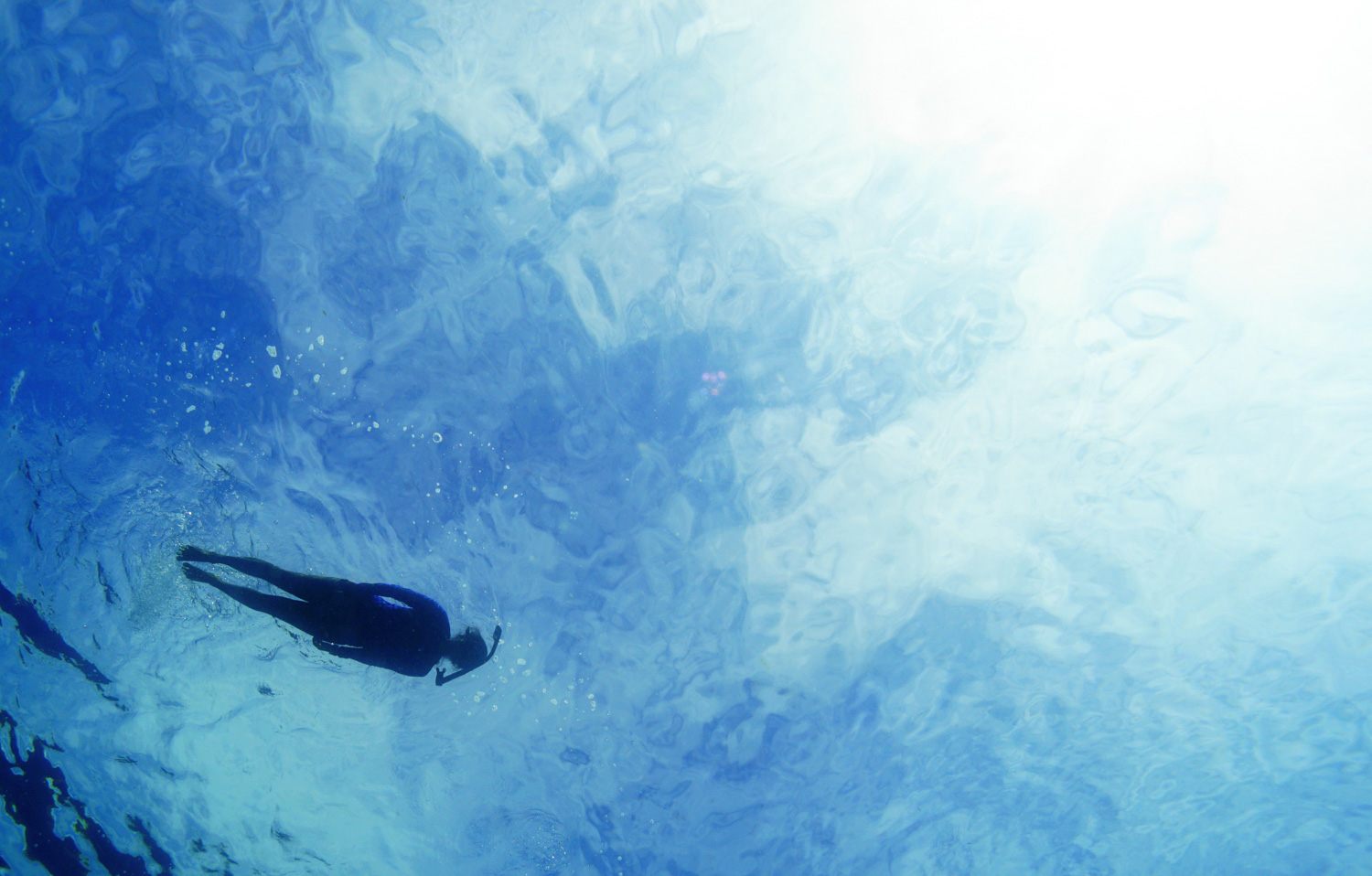
Being in the water brings me an immense sense of peace and joy — photo by Antonella Wilby
E/V Nautilus is operated by the Ocean Exploration Trust, a non-profit organization dedicated to studying new areas of the ocean—primarily focused on deep sea and mapping the ocean floor—and spreading excitement about it.
Mugdha’s Role Aboard the Nautilus
I got accepted to Ocean Exploration Trust’s Science Communication Fellowship in 2018. I was a Science Communication Fellow (SCF) on one expedition and luckily, was invited back as a Lead SCF on a second expedition later that year! My role was to communicate the research done on the Nautilus. During ROV dives, I would sit in a dark control van with scientists and engineers and answer questions from the public while we explored the ocean floor! Since the video stream is live, people all over the world check in and send in questions to our team.
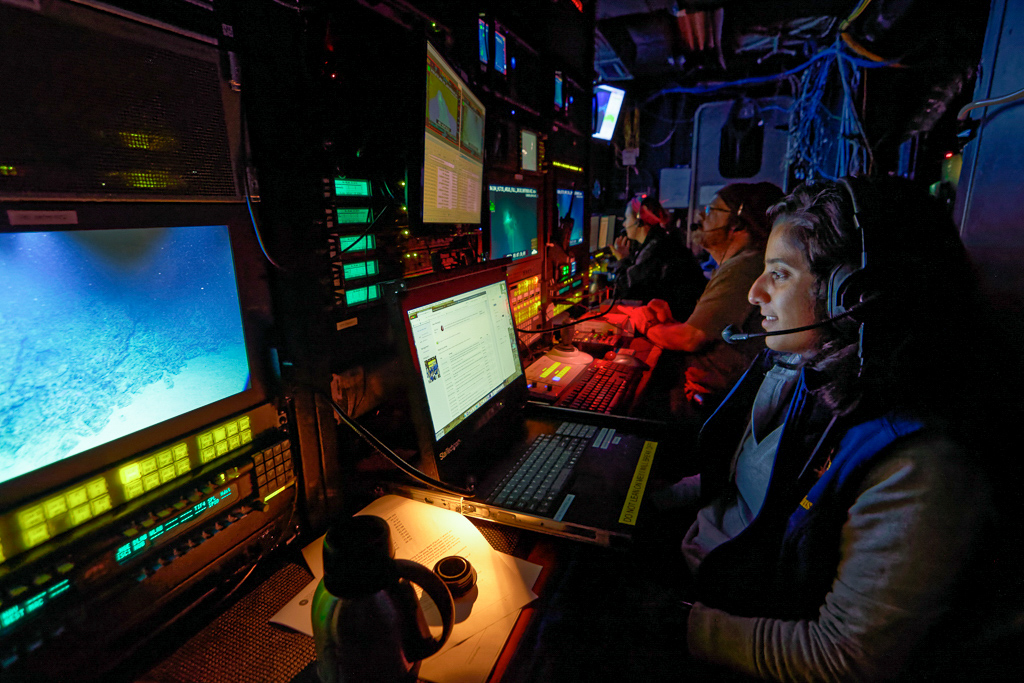
Mugdha on watch in the control van aboard EV Nautilus — photo by Ed McNichol for OET
I also conducted live interviews from the ship with classrooms on shore so students got the chance to speak to some of the scientists and engineers on our team. It was a very rewarding experience to see students and teachers excited about ocean exploration and wanting to be a part of it. My recent experiences on the Nautilus also taught me a great deal about deep-sea ecosystems.
Creating Maps of the Ocean Floor is Critical to Marine Conservation
The ocean makes up more than 70% of Earth and we have barely explored 5% of it. While we have a good understanding of coastal marine ecosystems, there is still so much to learn about the twilight zone (200-500 ft) and the deep-sea (>500 ft).
This beating blue heart of our planet is incredibly diverse and we need to understand more about it. The ocean is our planet’s inner space. Hence, scientists and engineers are using technology to observe the ocean floor and create detailed maps of underwater features, like seamounts and canyons.
Technology on the Nautilus
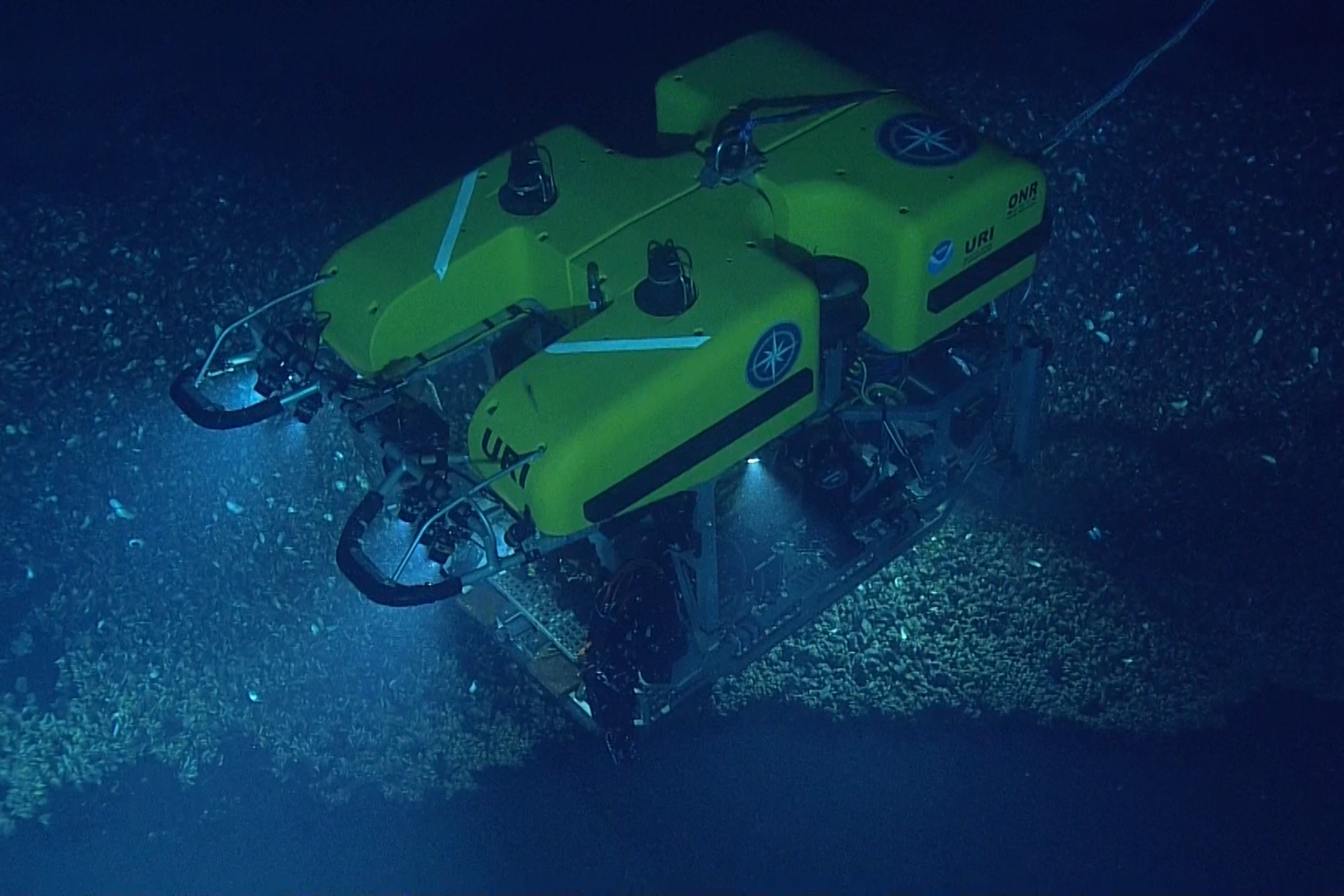
ROV Hercules exploring a deep-sea brine pool — photo credit OET & Nautilus Live
Our team uses two remotely operated vehicles (ROVs): Hercules and Argus. Hercules and Argus work in tandem and are tethered to the ship. Both ROVs have cameras so the Corps of Exploration (scientists, educators, engineers, navigators), can see what lies beneath the ocean’s surface.
The video is also live-streamed so people all over the world can follow along and explore underwater mountains (seamounts), canyons, hydrothermal vents, and underwater volcanoes. The features of the ocean floor bear a striking resemblance to features we see while exploring public lands.
As a science communicator on the Nautilus, I found myself in awe and looked forward to sharing fascinating ocean worlds with the public. On most expeditions, what we saw was being observed for the very first time: a “garden” of octopods (or octopuses); or elusive, deep-sea chimaeras (also known as ghost sharks); or tiny, translucent sea-pigs (a deep-sea relative of sea cucumbers). It is absolutely exciting and mesmerizing to observe these creatures in their natural habitat, which lies thousands of feet below the ocean’s surface. These organisms have adapted to living in areas with little to no light and under a great deal of physical pressure.
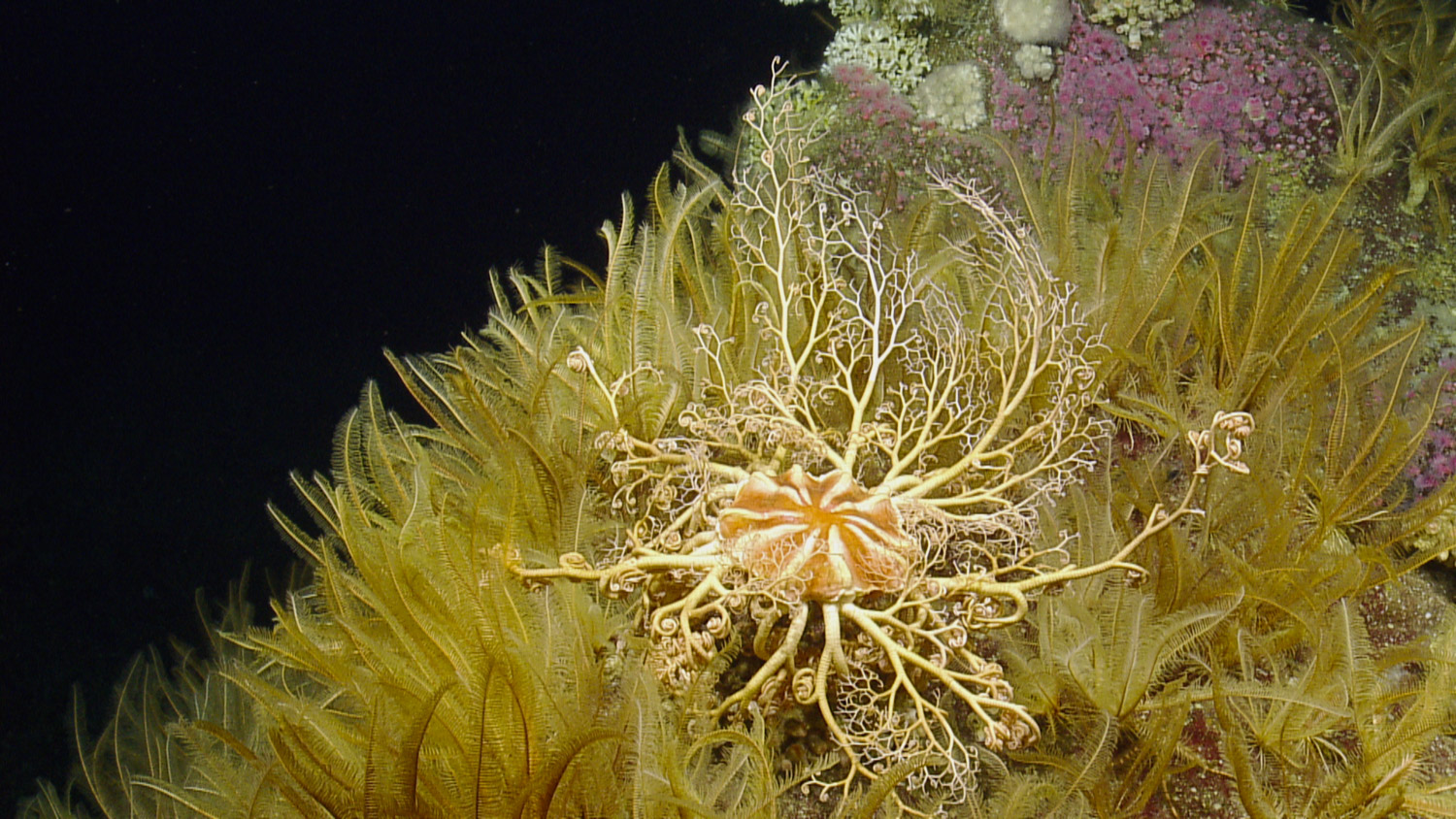
A basket star, laying on feathery crinoids, unfurls and extends its arms at night to feed on tiny organisms in the water column — photo credit OET & Nautilus Live
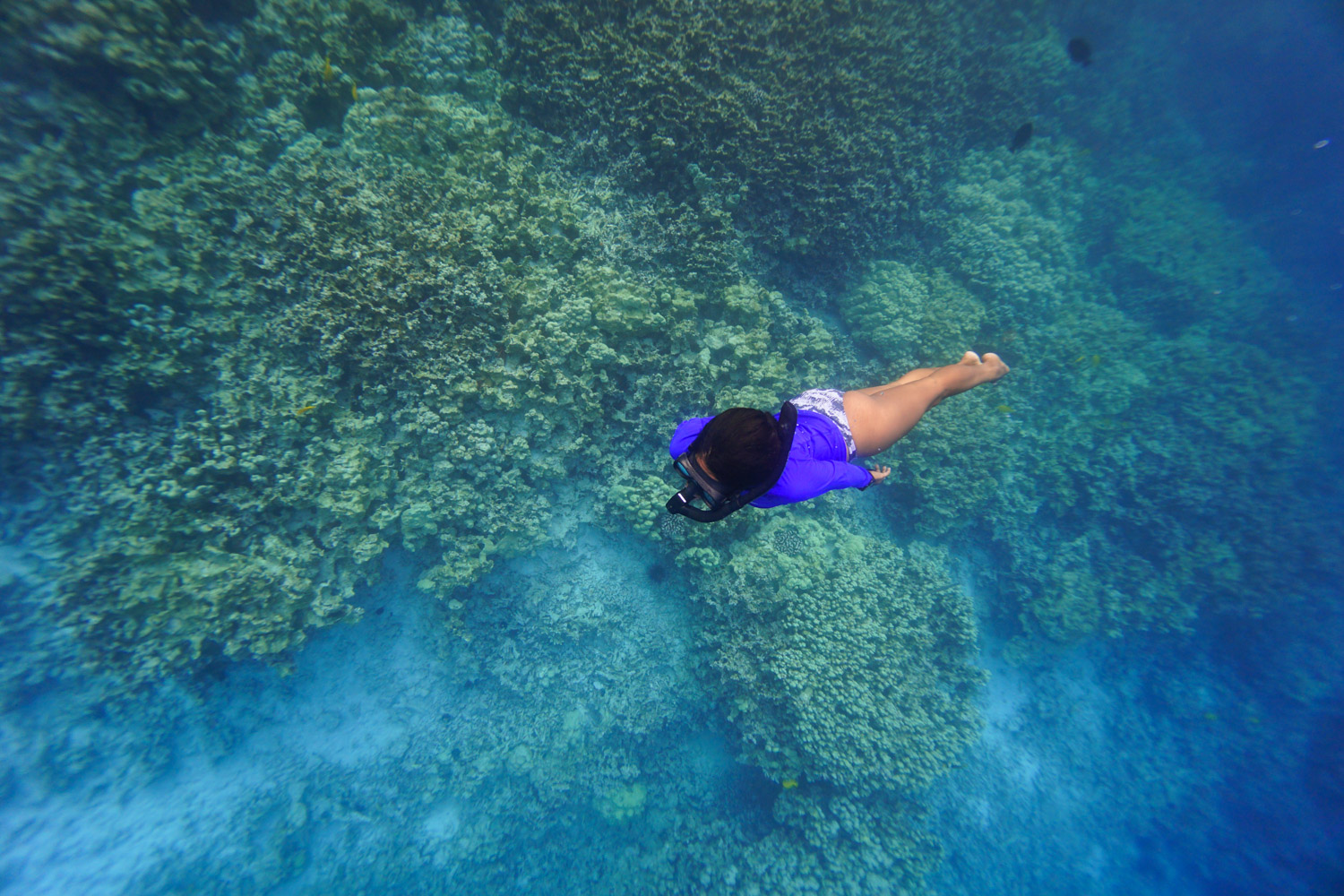
Closer to the surface, Mugdha explores a healthy reef off Hawaii’s big island — photo by Antonella Wilby
Underwater Exploring
The two expeditions that I was a part of took me to Lō’ihi Seamount, a submerged active volcano off the coast of Hawai’i Island, and later to ancient, submerged shorelines off California’s Channel Islands. It was astounding the see the difference in these two deep-sea habitats.
Lō’ihi’s craters had an otherworldly feel to them: they were made up of volcanic rocks (basalt) covered in thick bacterial mats (carpet-like mats created by microorganisms) and seemed almost devoid of larger biological life. Meanwhile, the seafloor around the Channel Islands was bursting with life: there was a diversity of deep-sea corals, fish, crabs, skates, anemones and much more!
- Channel Islands: A Wolf Eel glides on a deep sea reef covered in bright pink and orange cup corals — photo credit OET & Nautilus Live
- Loihi Seamount: Volcanic rocks covered in yellow bacterial mats, giving this deep sea ecosystem an eerie and otherworldly feel — OET & Nautilus Live
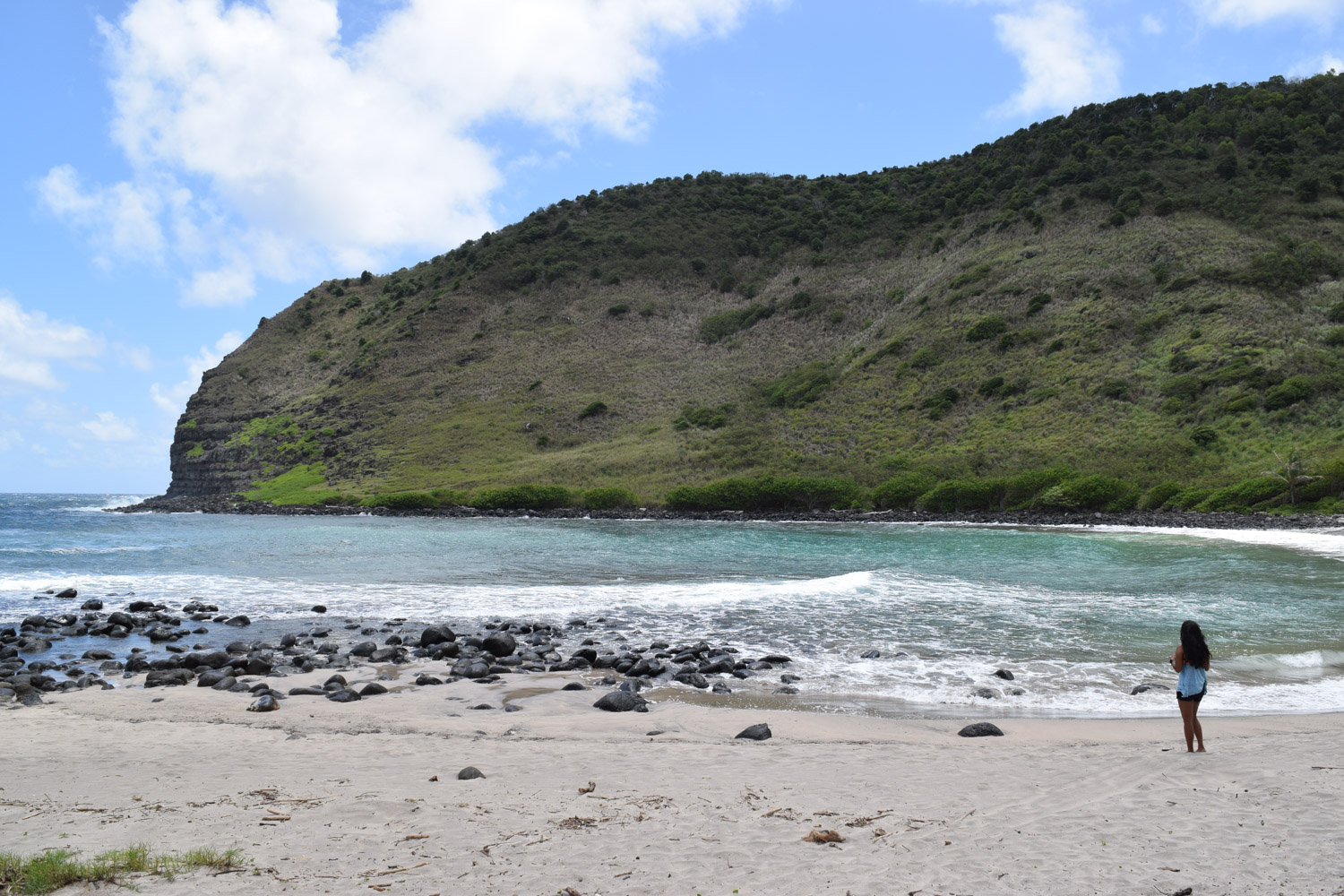
A moment to reflect on a remote coastline on Moloka’i, Hawaii
The Human Impact
Although there is so much more we still need to learn about the ocean and its exciting wonders, our actions are impacting it every day. The growing human population has put pressure on our natural resources and the ocean is no different. One such issue that most of us are not strangers to is plastic pollution.
- James Campbell National Wildlife Refuge in Kahuku Oahu receives tremendous amounts of marine debris with each wave. Regular beach clean up is the only way to keep it clean for now.
- Our addiction to single use plastics has wreaked havoc on the ocean and wildlife
The marine habitats I have studied have all been affected by man-made trash and debris. I have seen debris on beaches in Hawai’i, reefs in the Caribbean, and even thousands of feet below the ocean’s surface. Scientists have even found trash (plastic bags) in the Mariana Trench—the deepest point in the ocean. I am always saddened to see debris, especially single-use items that can be avoided.
During my time as the Education Director at Sustainable Coastlines Hawaii, I became very familiar with the issue of marine debris and learned ways to mitigate our negative impact on the ocean.
What We Can Do for Marine Conservation
Every action can lead to a greater, positive impact and we are already seeing that all over the world. Mindful choices can create a better future for the ocean, such as:
- Reduce our use of plastics
- Refuse single-use plastic products
- Switch to reusable bottles, bags, straws, and utensils (I recommend having these in a small bag or kit, ready-to-go so you don’t leave home without them)
- Avoid produce wrapped in plastic, and support local farmers by eating more fresh food instead of packaged, processed food
- Help at a beach or river cleanup
- Donate time or funds to non-profits that support conservation efforts
- Sustainable Coastlines Hawaii (I worked as the Educational Director for 2 years!)
- 5Gyres
- Algalita
- Surfers Against Sewage
- 2 Minute Beach Cleanup
- Take Three for the Sea
- Be aware of seafood sustainability
- It’s helpful to know your local fisher and purchase seafood from sources that are sustainable
- Apps like Seafood Watch, Sustainable Seafood Guide, and Good Fish Guide can help us make better choices
- Support legislation
- Non-profit organizations do a great job raising awareness about bills that require attention
- We can help by submitting testimony (online or in-person) and write to elected officials
Takeaways
Whether we live near the shore or far from coastlines, we depend on the ocean. It makes almost two-thirds of the oxygen we breathe, regulates climate, provides food, and brings so much joy—think about experiences like swimming, surfing, diving or sailing.

Yellow tangs and moorish idols swim on a busy reef in Hawaii — photo by Antonella Wilby
For as long as I can remember, it has been easy for me to love the ocean and feel the need to protect it. The ocean has helped me connect with nature and inspired me to get out as often as I can. Hopefully, the more we learn about the ocean’s depths, the more we can understand how to care for these environments and reduce our negative impacts on them.
Mugdha Flores is a marine scientist and educator. She spent 3 years working for a nonprofit organization in Hawaii. She also worked aboard Exploration Vessel E/V Nautilus as a Science Communication Fellow. Additionally, she leads students on international academic programs to help foster a love and curiosity of the ocean in the next generation. When she isn’t working, she loves spending time with her 3 dogs and husband as they explore the Pacific Northwest. Find her on Instagram @mugsie_b.




Be the first to comment